
The Majestic Mt. St. Helens: Nature's Power Unleashed
Experience the awe-inspiring beauty and power of Mt. St. Helens, a testament to nature's resilience and volcanic majesty in Washington State.
Mt. St. Helens, the iconic volcano in Washington, offers tourists a breathtaking experience of nature's beauty and raw power. Visitors can explore its scenic landscapes, learn about its volcanic history, and enjoy various outdoor activities in this stunning national monument.
A brief summary to Mt St Helens
- Washington, US
Local tips
- Arrive early to secure parking, especially during peak tourist seasons.
- Dress in layers as temperatures can change quickly in the mountain environment.
- Bring binoculars for wildlife viewing and a good camera for capturing the breathtaking views.
- Check the weather and trail conditions before heading out, as some areas may be restricted.
- Visit the Johnston Ridge Observatory for informative exhibits and stunning vistas of the crater.
Getting There
-
Car
If you're driving within the Mount St. Helens National Volcanic Monument, the primary route to reach Mt. St. Helens is via State Route 504. From the visitor center located at 42218 Spirit Lake Hwy, Amboy, WA, head east on State Route 504. Follow the highway for approximately 37 miles. There will be signs directing you to the Mt. St. Helens viewpoints and trailheads. Make sure to stop at the Johnston Ridge Observatory for a breathtaking view of the volcano, which is about 5 miles before reaching the summit area. Parking at the observatory is typically free, but check for any seasonal fees during peak visitor months.
-
Public Transportation
Public transportation options are limited in this area. However, you can take a Greyhound or similar bus service to the nearest major city, which is Portland, Oregon. From Portland, you may need to rent a car or use a rideshare service to reach Mt. St. Helens National Volcanic Monument. Expect to pay around $50 to $100 for car rentals depending on the season. Once you arrive at the monument, follow the same route as noted for drivers, taking State Route 504 to reach Mt. St. Helens.
-
Bicycle
For the adventurous, biking to Mt. St. Helens is an option, though challenging. From the town of Toutle, Washington, cyclists can ride along Spirit Lake Highway (State Route 504), which is about 25 miles from Toutle to the Johnston Ridge Observatory. Be prepared for steep inclines and ensure you have the necessary gear. There are no dedicated bike lanes, so caution is advised. There are no fees for biking into the monument, but you must carry all necessary supplies, including water and food, as services are limited.
Discover more about Mt St Helens
Iconic landmarks you can’t miss
Miners Car Interpretive Site
14.9 km
Explore the Miners Car Interpretive Site in Cougar, WA - A Historical Landmark Highlighting the Rich Mining Heritage of the Pacific Northwest.

Rashford spur historic logging camp
27.5 km
Discover the rich history of the Rashford Spur Logging Camp in Amboy, Washington, and immerse yourself in the stories of the Pacific Northwest's logging heritage.

Yale Bridge
29.1 km
Discover Yale Bridge in Ariel, WA: A breathtaking suspension bridge offering spectacular views, perfect for nature lovers and photography enthusiasts.
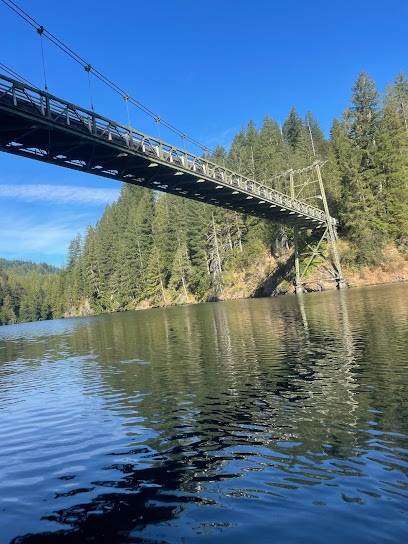
North Clark Historical Museum
37.0 km
Discover the captivating history of Clark County at the North Clark Historical Museum in Amboy, a treasure trove of stories and artifacts.

Interpretive Site: Layser Cave
39.4 km
Discover Layser Cave, a historical landmark in Washington that offers a unique blend of geological wonders and rich local history.
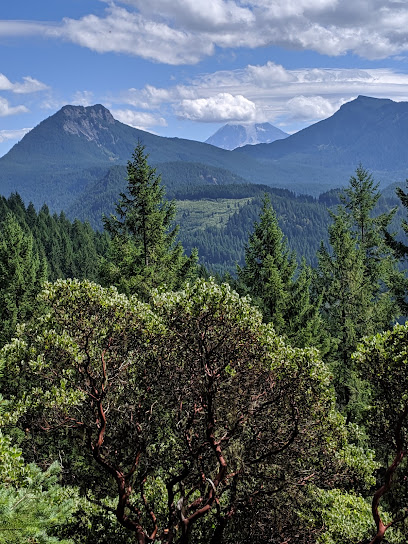
Pomeroy Farm
43.9 km
Discover a historical gem in Yacolt, WA, where nature and education combine at Pomeroy Farm, featuring a tea house, pumpkin patch, and scenic farm tours.
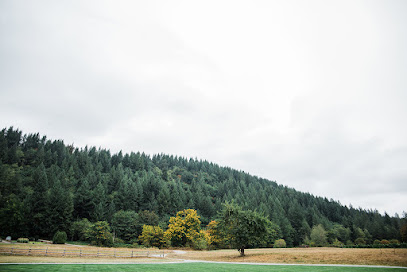
Historical Marker
62.5 km
Discover the rich history of Cascade Locks at the Historical Marker, a key attraction for history enthusiasts and nature lovers in Oregon.

The Oregon Pony
62.6 km
Discover The Oregon Pony, a historical landmark in Cascade Locks, Oregon, where rich heritage meets stunning scenery in the Pacific Northwest.
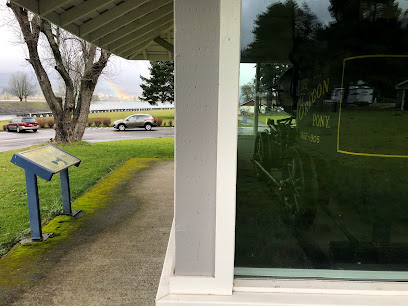
Cascade Locks Historical Museum
62.6 km
Explore the Cascade Locks Historical Museum, where history and culture converge in the heart of Oregon's breathtaking landscapes.
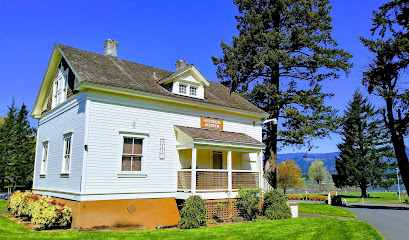
WA State Historical Marker #19 - Bridge of the Gods
62.8 km
Discover the Bridge of the Gods: A historical landmark offering breathtaking views and a glimpse into the rich heritage of the Columbia River Gorge.
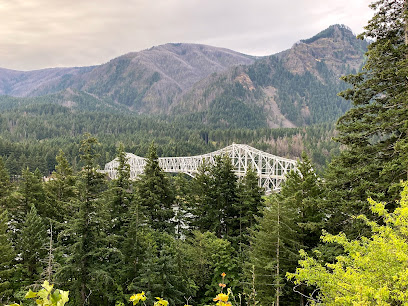
Thunder Island Brewing Co
63.0 km
Discover the flavors of Oregon at Thunder Island Brewing Co, where craft beer meets stunning views in the heart of the Columbia River Gorge.
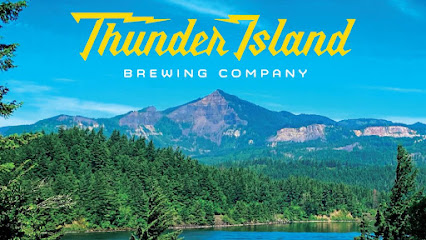
Mount Rainier National Park Headquarters
63.0 km
Discover the wonders of Mount Rainier National Park at the Headquarters Visitor Center, your gateway to breathtaking landscapes and outdoor adventures.
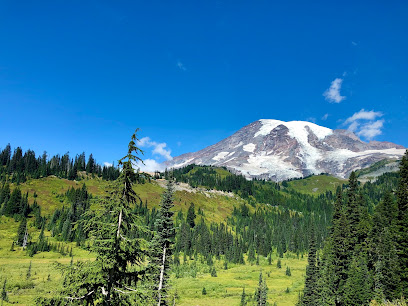
Bridge of the Gods
63.1 km
Experience the breathtaking views and rich history of the Bridge of the Gods, a stunning suspension bridge in the heart of the Columbia River Gorge.
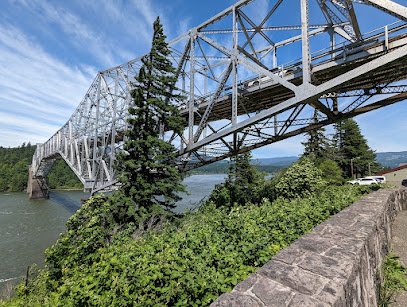
Historic Columbia River Highway State Trail - Bridge of the Gods Trailhead
63.2 km
Experience the stunning views and rich history along the Historic Columbia River Highway State Trail, a must-visit destination for nature lovers and adventure seekers in Oregon.
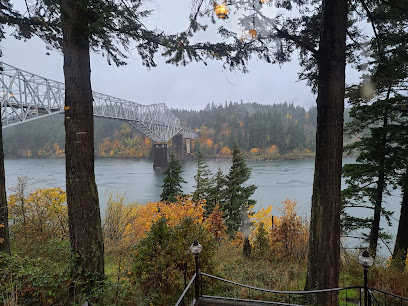
Wind Mountain Trailhead
63.2 km
Explore the breathtaking Wind Mountain Trailhead in Stevenson, WA, a hiking gem offering stunning views and a chance to connect with nature.
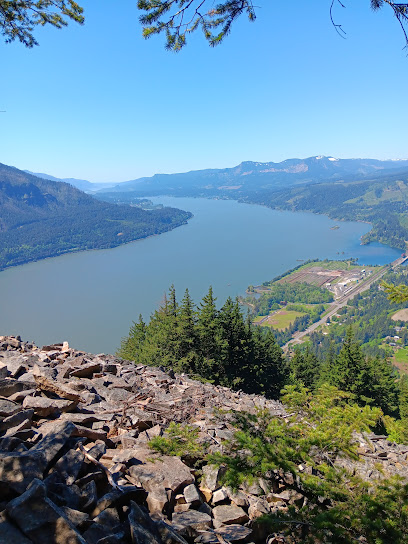
Unmissable attractions to see
Mt. Saint Helens
0.7 km
Discover the breathtaking beauty and geological history of Mt. Saint Helens, an archaeological treasure in Washington State's stunning wilderness.

Ape Canyon
5.2 km
Explore the stunning Ape Canyon in Washington – a breathtaking ravine filled with scenic trails, rich wildlife, and stunning natural beauty.
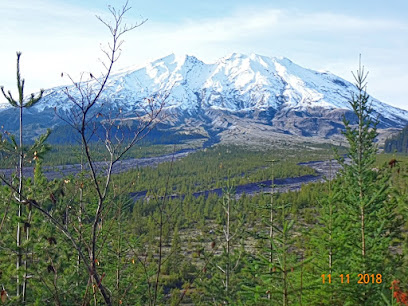
Mount St. Helens National Volcanic Monument
5.4 km
Explore the stunning landscapes and geological wonders of Mount St. Helens National Volcanic Monument, a testament to nature's power and resilience.
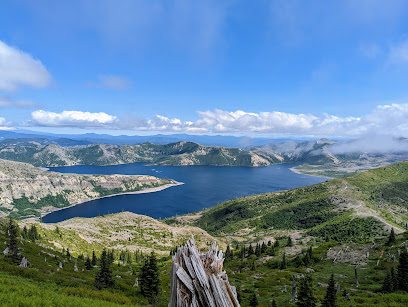
June Lake Trailhead And Parking
6.7 km
Discover breathtaking views and diverse hiking trails at June Lake Trailhead in Cougar, Washington – a paradise for nature enthusiasts.
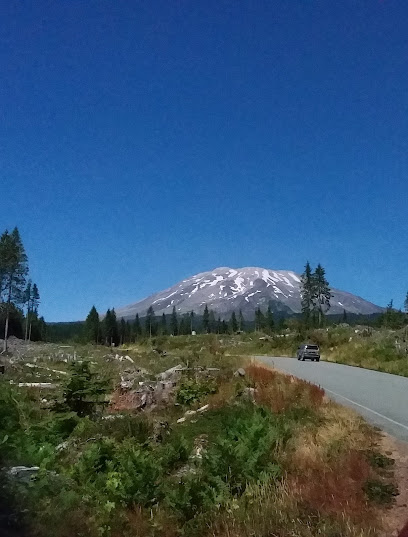
Sno-Park: Marble Mountain
7.1 km
Discover the beauty of Sno-Park: Marble Mountain, a premier hiking destination in Washington with stunning views of Mount St. Helens and diverse landscapes.
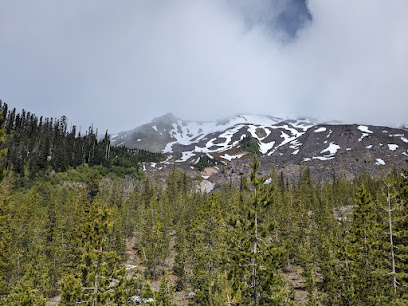
Windy Ridge Viewpoint
7.9 km
Discover the stunning vistas of Mount St. Helens at Windy Ridge Viewpoint, a scenic spot that promises awe-inspiring views and unforgettable hiking experiences.
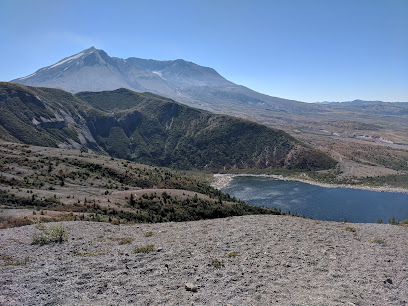
Mount St Helen's View Point
8.4 km
Discover the breathtaking beauty and educational insights at Mount St. Helens View Point, a cultural landmark in Washington showcasing nature's resilience.
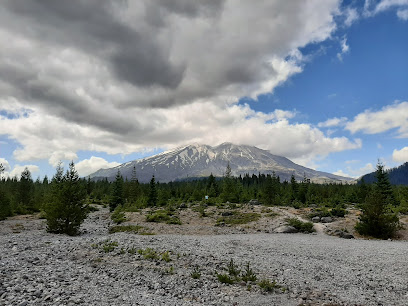
Lava Canyon Trailhead
8.7 km
Experience the breathtaking beauty of Lava Canyon Trailhead, a hiker's paradise featuring stunning landscapes and rich geological heritage in Washington.
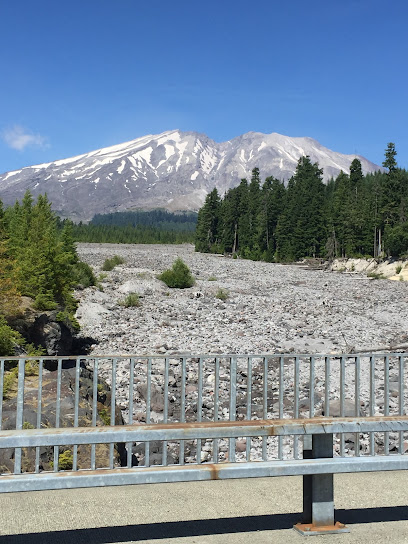
Mount St Helens Viewpoint
9.1 km
Explore the stunning vistas of Mount St. Helens at this scenic viewpoint, where nature's beauty and geological history come together.
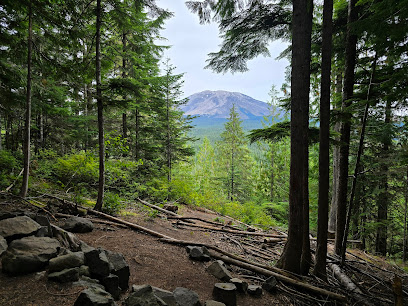
Ape Cave Interpretive Site
9.2 km
Discover the breathtaking Ape Cave Interpretive Site in Cougar, Washington, a geological marvel perfect for hiking and adventure enthusiasts.
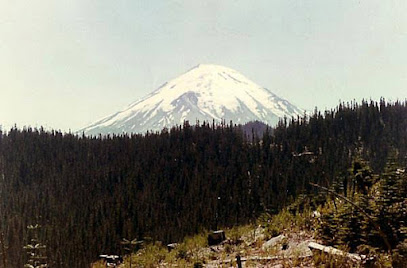
Ape Cave
9.2 km
Discover the breathtaking landscapes and geological wonders of Ape Cave, a premier lava tube adventure in Washington's stunning wilderness.
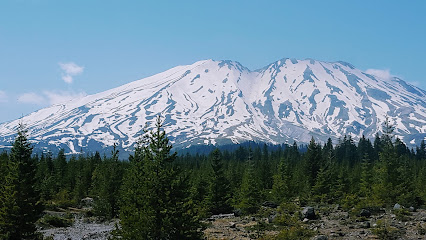
Johnston Ridge Observatory
9.5 km
Discover breathtaking views and volcanic history at Johnston Ridge Observatory, a must-visit destination in Washington State's stunning landscape.
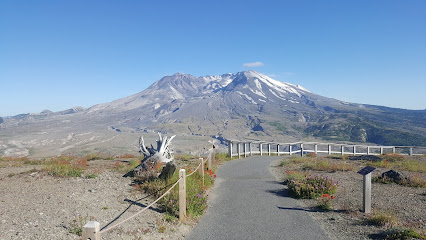
Harry's Ridge
9.5 km
Explore Harry's Ridge: A Scenic Hiking Paradise in Cougar, Washington with Stunning Views and Diverse Trails for All Skill Levels.
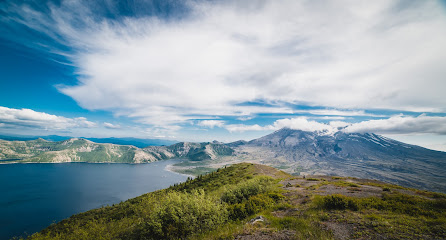
Mount Saint Helens National Volcanic Monument
9.6 km
Explore the captivating beauty and geological significance of Mount Saint Helens National Volcanic Monument, a must-visit destination in Washington.
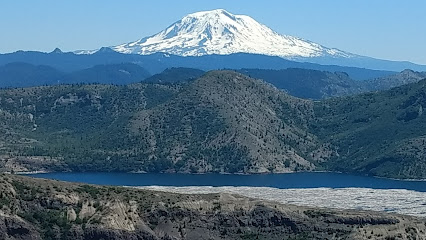
Loowit Viewpoint
9.8 km
Discover the stunning views of Mount St. Helens at Loowit Viewpoint, a must-visit destination for nature lovers and photographers in Washington.
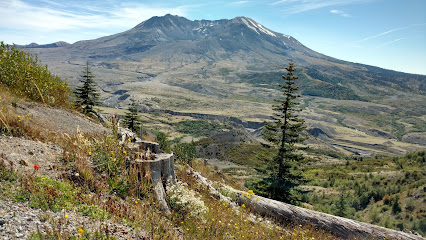
Essential places to dine
Cougar Bar & Grill
17.5 km
Experience delicious grilled delights at Cougar Bar & Grill, where local flavors meet stunning natural beauty in Washington.
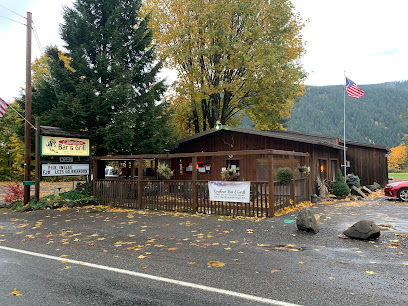
Lone Fir Cafe
17.7 km
Experience delightful dining at Lone Fir Cafe near Mount St. Helens with family-friendly meals and stunning river views.
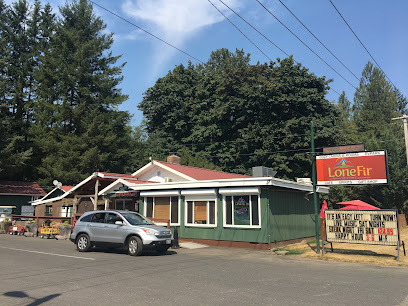
Lone Fir Resort
17.7 km
Experience the beauty and adventure at Lone Fir Resort in Cougar, WA – your perfect escape into nature's embrace.
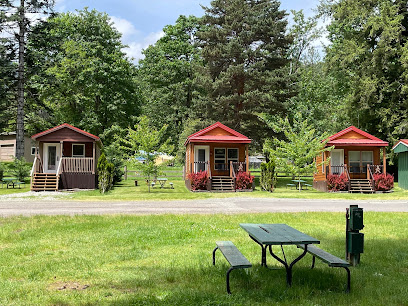
Big Bottom Roadhouse
42.4 km
Experience the best grilled delights at Big Bottom Roadhouse in Randle, WA - where great food meets warm hospitality.

Tall Timber Restaurant Lounge
43.2 km
Discover the flavors of America at Tall Timber Restaurant Lounge in Randle – your perfect retreat for delicious food and cozy accommodations.
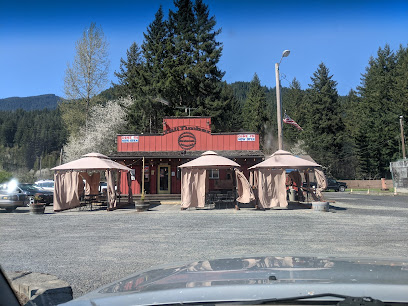
Big River Grill
60.4 km
Experience delicious American cuisine at Big River Grill in Stevenson, WA – where local flavors meet hearty comfort food.

River Rock
60.5 km
Experience American cuisine with breathtaking views at River Rock in Stevenson, WA - perfect for food lovers and nature enthusiasts alike.

Cascade Dining Room
60.5 km
Experience American cuisine amidst breathtaking views at Cascade Dining Room in Skamania Lodge, Columbia River Gorge's culinary gem.

Cliff Droppers
60.9 km
Discover mouthwatering burgers at Cliff Droppers in Packwood, WA – where flavor meets friendly service amidst stunning landscapes.

Blue Spruce Saloon And Diner
61.3 km
Experience local flavors at Blue Spruce Saloon & Diner in Packwood – where hearty meals meet friendly service amidst stunning natural beauty.

Cruiser’s Pizza
61.4 km
Discover Cruiser’s Pizza in Packwood - where delicious handcrafted pizzas meet warm hospitality amidst stunning natural beauty.

Brigham Fish Market
63.0 km
Discover fresh seafood delights at Brigham Fish Market in Cascade Locks - where local flavors meet stunning river views.

Mt. Rainier Railroad Dining Co.
63.8 km
Discover delicious American cuisine at Mt. Rainier Railroad Dining Co., where scenic views meet delightful flavors near Mount Rainier.

Rainier BaseCamp Bar & Grill
64.5 km
Discover delightful flavors at Rainier BaseCamp Bar & Grill - your perfect dining stop near Mount Rainier National Park.
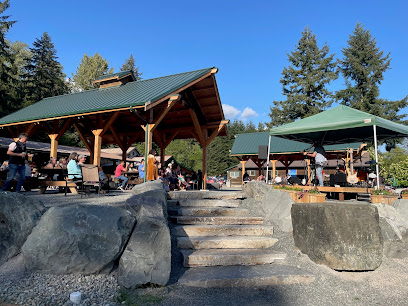
Paradise Village Hotel & Restaurant
64.5 km
Experience unparalleled comfort and natural beauty at Paradise Village Hotel & Restaurant near Mount Rainier National Park.

Markets, malls and hidden boutiques
Mt St Helens Forest Learning Center
20.2 km
Explore the Mt. St. Helens Forest Learning Center: Uncover the science, beauty, and recovery of one of nature's most iconic landscapes.
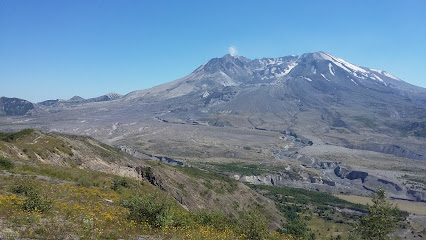
Fischer's Market
42.3 km
Experience local flavors and convenience at Fischer's Market in Randle, WA - a must-visit grocery store for every traveler.

Carson General Store
59.1 km
Explore Carson General Store: Your one-stop shop for local treasures, snacks, and essentials in the heart of Washington's breathtaking landscapes.

Bloomsbury of Kanaka Creek Farm
60.4 km
Experience the beauty of Bloomsbury of Kanaka Creek Farm, a florist and women's clothing store in Stevenson, WA, where nature meets style.

Wind Mountain Ranch
62.5 km
Discover the enchanting Wind Mountain Ranch, a perfect wedding venue and retreat center nestled in the majestic Washington wilderness.

Eastwind Drive-In
62.7 km
Experience the perfect blend of classic American fast food and irresistible ice cream at Eastwind Drive-In in scenic Cascade Locks.
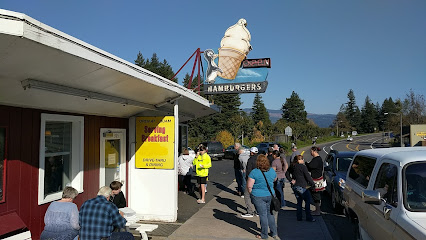
Bike the Gorge
62.9 km
Explore the stunning Columbia River Gorge with Bike the Gorge - your gateway to cycling adventures in Oregon's breathtaking landscapes.

Columbia Market
62.9 km
Discover local flavors and fresh produce in the heart of Cascade Locks at Columbia Market, your go-to grocery store for all your needs.

Bridgeside
63.1 km
Experience the best of American cuisine at Bridgeside in Cascade Locks, where local flavors meet breathtaking scenic views.

Elbe Market Country Store
63.7 km
Experience local flavors and unique souvenirs at Elbe Market Country Store, a charming stop for every traveler in Washington.

Ashford Creek Pottery
64.3 km
Explore the enchanting Ashford Creek Pottery, a unique art gallery and pottery store in Ashford, WA, showcasing local craftsmanship and creativity.
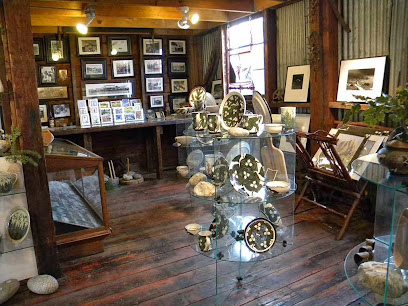
Whittaker Mountaineering
64.4 km
Explore the great outdoors with top-notch equipment and expert advice at Whittaker Mountaineering in Ashford, WA.
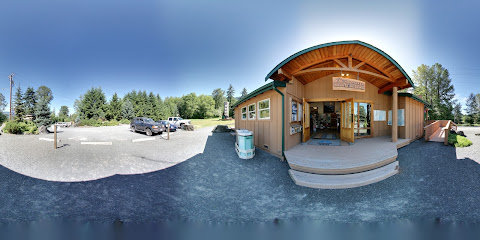
Spruce Gifts and Provisions
64.7 km
Discover the charm of Cascade Locks at Spruce Gifts and Provisions, your go-to spot for unique local gifts and artisan treats.

Cedar Creek Alpacas
64.9 km
Discover the charm of Cedar Creek Alpacas in Cook, WA, where you can connect with friendly alpacas and shop unique, locally-made products.

Longmire General Store & Mt. Rainier Natl. Park Gift Shop
68.6 km
Explore the beauty of Mount Rainier and discover unique souvenirs and snacks at the Longmire General Store, your ultimate park companion.

Essential bars & hidden hideouts
Backwoods Brewing Company
59.1 km
Experience the best of local craft brews and delicious American cuisine at Backwoods Brewing Company in scenic Carson, WA.

Bungalow Bar & Grill
59.6 km
Discover the charm of Bungalow Bar & Grill, your go-to spot for local brews and hearty meals in Carson, Washington.

Red Bluff Tap House
60.4 km
Discover the flavors of Stevenson at Red Bluff Tap House – a must-visit gastropub featuring local cuisine and a vibrant craft beer selection.

Rock Creek Tavern
60.5 km
Discover Rock Creek Tavern, a welcoming bar in Stevenson, WA, offering a vibrant atmosphere, local drinks, and a chance to connect with the community.

Walking Man Brewing
60.5 km
Experience the art of craft brewing at Walking Man Brewing, a must-visit destination for beer and pizza lovers in Stevenson, WA.
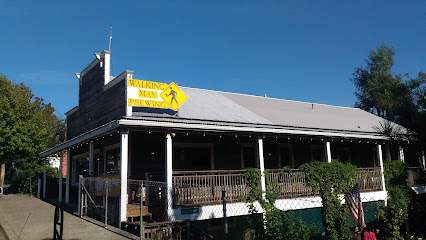
Cascade Locks / Portland East KOA Holiday
62.4 km
Discover the Ultimate Camping Experience in the Heart of the Columbia River Gorge at Cascade Locks / Portland East KOA Holiday.
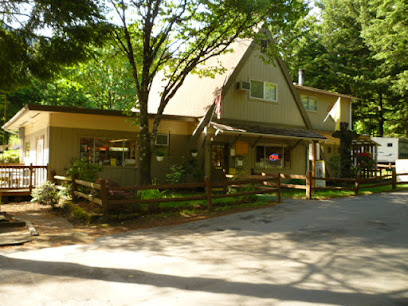
Gorges Beer Co.
62.8 km
Discover the best of Cascade Locks at Gorges Beer Co., where exquisite craft beers meet delicious local cuisine in a stunning riverside setting.
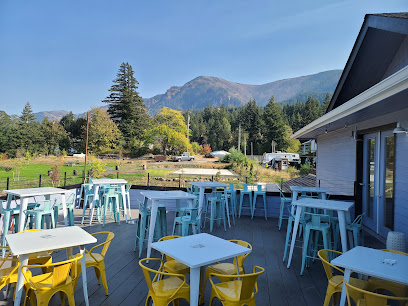
Cascade Locks Ale House
62.9 km
Discover the Cascade Locks Ale House, where local brews meet stunning views in the heart of the Columbia River Gorge.
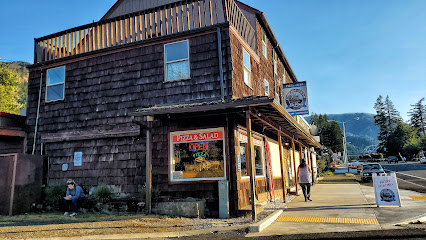
Elbe Bar & Grill
63.6 km
Experience the best of local flavors at Elbe Bar & Grill, a cozy spot perfect for unwinding after exploring Washington's stunning landscapes.

Alexander's Lodge At Mt Rainier
65.3 km
Experience the perfect blend of adventure and comfort at Alexander's Lodge, your gateway to the natural wonders of Mt. Rainier National Park.
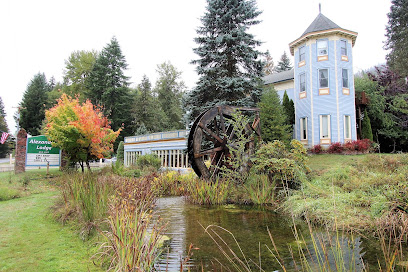
National Park Inn
68.6 km
Discover the serene beauty of Mount Rainier National Park while enjoying a cozy stay at the National Park Inn, a historic retreat in nature's paradise.

Red Carpet Inn
73.2 km
Experience the local charm and vibrant atmosphere of Red Carpet Inn, a must-visit bar in Hood River, Oregon, with craft drinks and live music.

pFriem Family Brewers
74.5 km
Experience the best of craft brewing at pFriem Family Brewers in Hood River, Oregon, where flavor meets local charm.

Camp 1805 Distillery & Bar
74.6 km
Discover the essence of Oregon at Camp 1805 Distillery & Bar, where craft spirits and delectable dishes unite in a cozy atmosphere.

Ferment Brewing Company
74.7 km
Explore the vibrant flavors of craft beer and delicious cuisine at Ferment Brewing Company in Hood River, Oregon.




